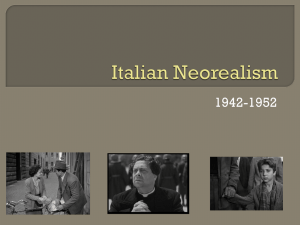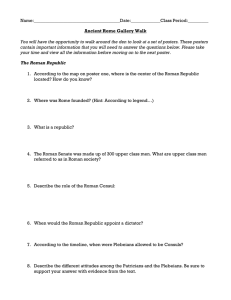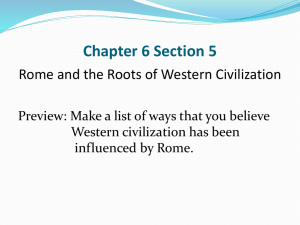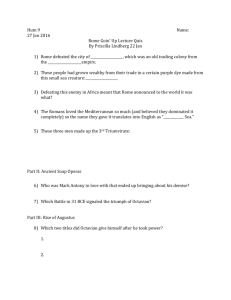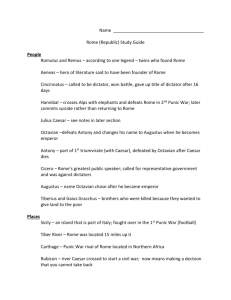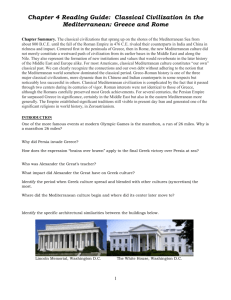Rome and Trade Routes
advertisement
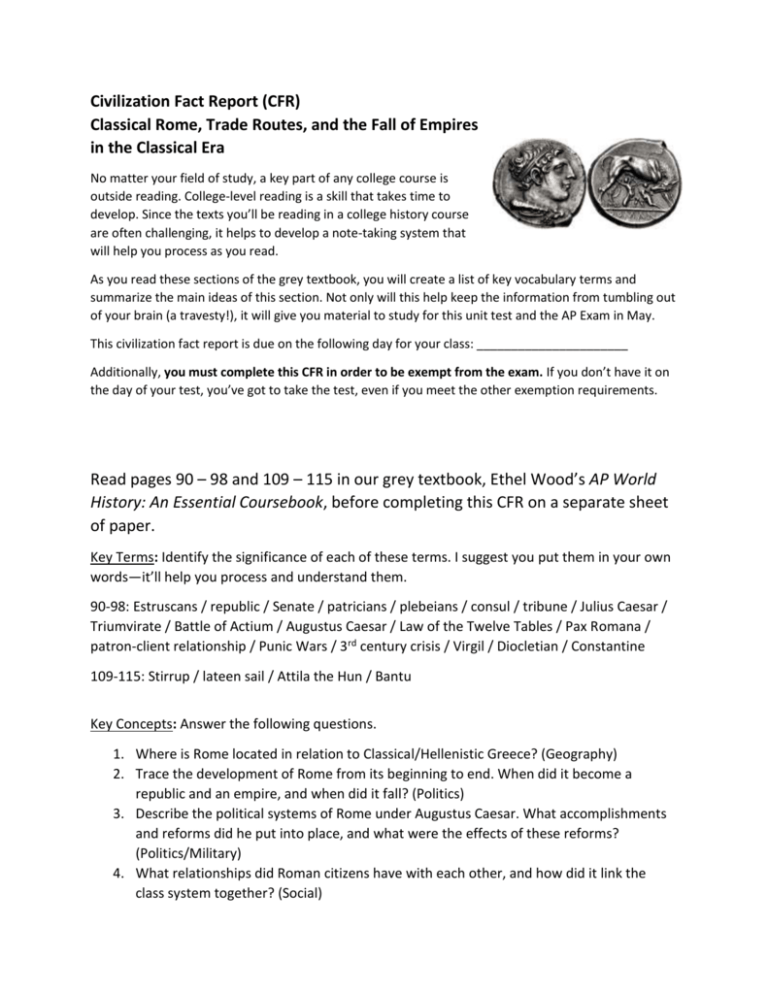
Civilization Fact Report (CFR) Classical Rome, Trade Routes, and the Fall of Empires in the Classical Era No matter your field of study, a key part of any college course is outside reading. College-level reading is a skill that takes time to develop. Since the texts you’ll be reading in a college history course are often challenging, it helps to develop a note-taking system that will help you process as you read. As you read these sections of the grey textbook, you will create a list of key vocabulary terms and summarize the main ideas of this section. Not only will this help keep the information from tumbling out of your brain (a travesty!), it will give you material to study for this unit test and the AP Exam in May. This civilization fact report is due on the following day for your class: ______________________ Additionally, you must complete this CFR in order to be exempt from the exam. If you don’t have it on the day of your test, you’ve got to take the test, even if you meet the other exemption requirements. Read pages 90 – 98 and 109 – 115 in our grey textbook, Ethel Wood’s AP World History: An Essential Coursebook, before completing this CFR on a separate sheet of paper. Key Terms: Identify the significance of each of these terms. I suggest you put them in your own words—it’ll help you process and understand them. 90-98: Estruscans / republic / Senate / patricians / plebeians / consul / tribune / Julius Caesar / Triumvirate / Battle of Actium / Augustus Caesar / Law of the Twelve Tables / Pax Romana / patron-client relationship / Punic Wars / 3rd century crisis / Virgil / Diocletian / Constantine 109-115: Stirrup / lateen sail / Attila the Hun / Bantu Key Concepts: Answer the following questions. 1. Where is Rome located in relation to Classical/Hellenistic Greece? (Geography) 2. Trace the development of Rome from its beginning to end. When did it become a republic and an empire, and when did it fall? (Politics) 3. Describe the political systems of Rome under Augustus Caesar. What accomplishments and reforms did he put into place, and what were the effects of these reforms? (Politics/Military) 4. What relationships did Roman citizens have with each other, and how did it link the class system together? (Social) 5. What was the role of women in Roman society, and how did it compare to that of women in Classical Greece? (Social) 6. How did Rome incorporate the people it conquered into the republic? (Politics) 7. What were the failures of the Roman republic, and how did this allow for Octavian to gain power? (Politics) 8. What were Rome’s major legal innovations? (Culture) 9. What influence did Greek art and literature hold in Rome? What innovations reflected the Roman preference for practicality? (Culture) 10. Identify reasons for Rome’s decline. (There are at least four identified in the text.) (Interactions) 11. What areas were connected by the Silk Road, and how did it allow goods and inventions to spread between societies without direct contact? (Interactions) 12. What roles did Central Asian nomads play in the Silk Road? (Interactions) 13. Describe the common reasons for the fall of Rome, Han China, and the Gupta Empire between 200 and 600 c.e. (Politics/Military/Interactions) 14. Why did Rome lose its identity after it fell? What “glue”are they missing that other societies had? (Interactions)




